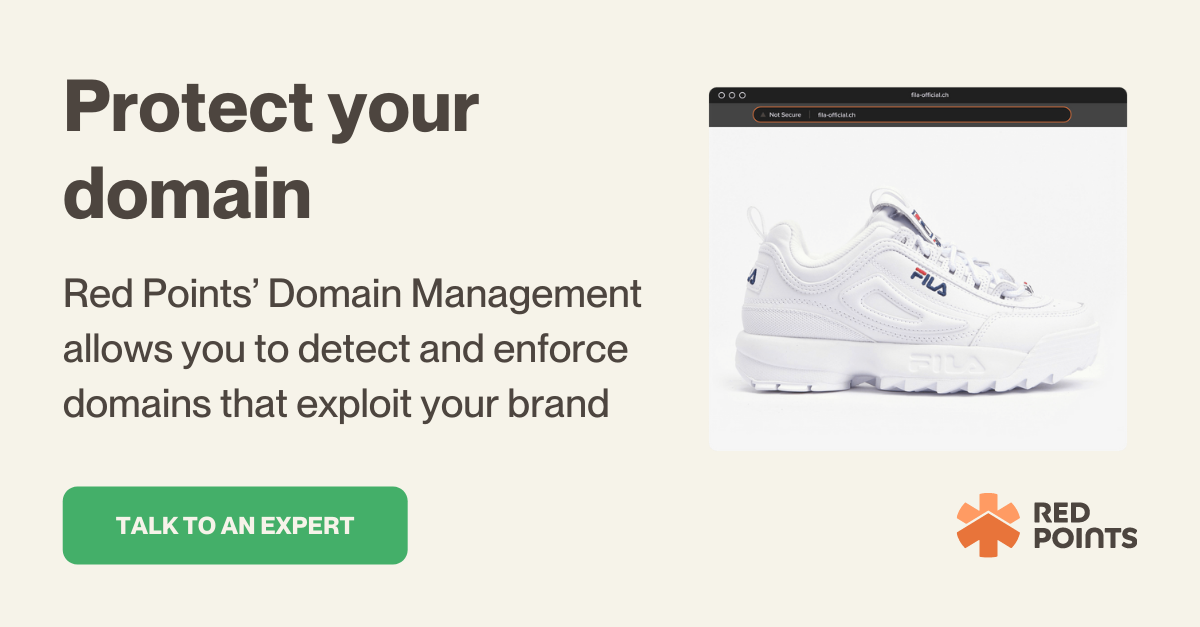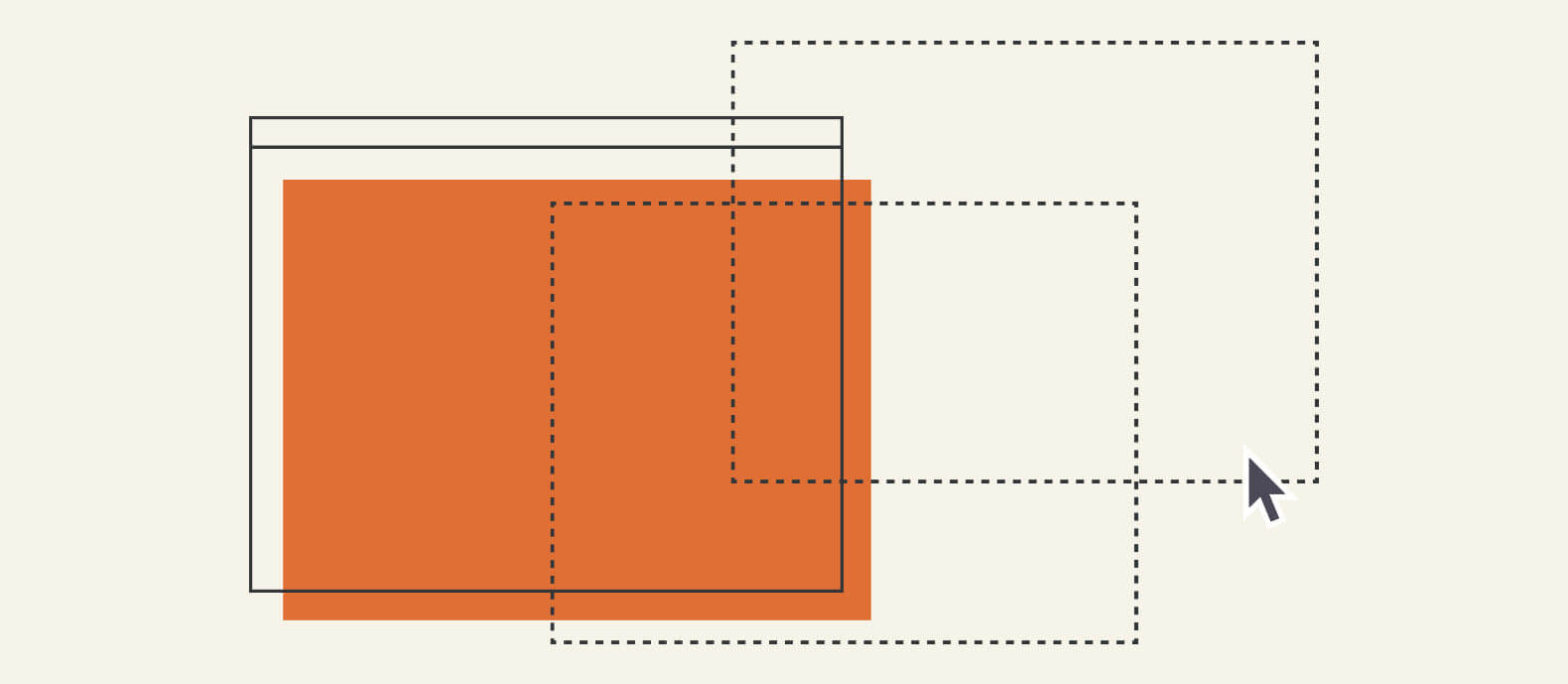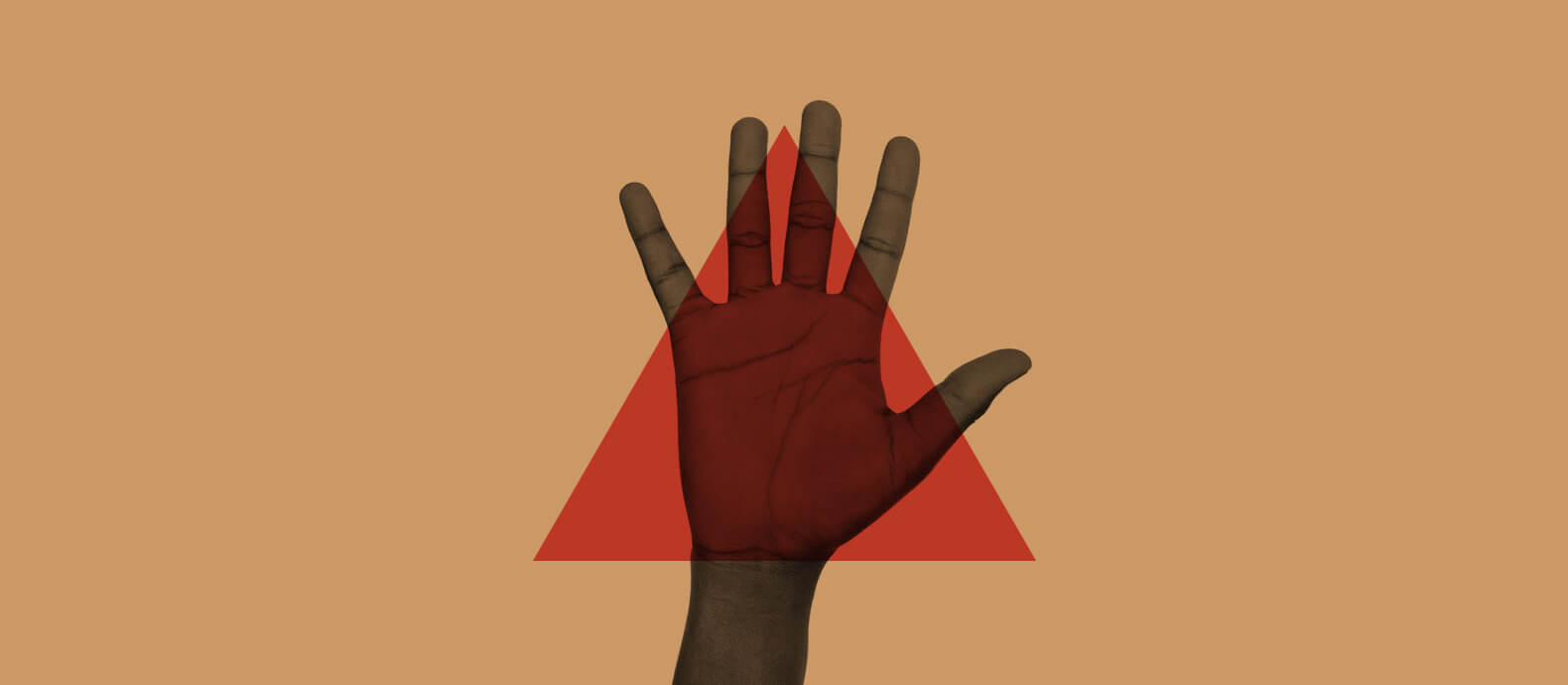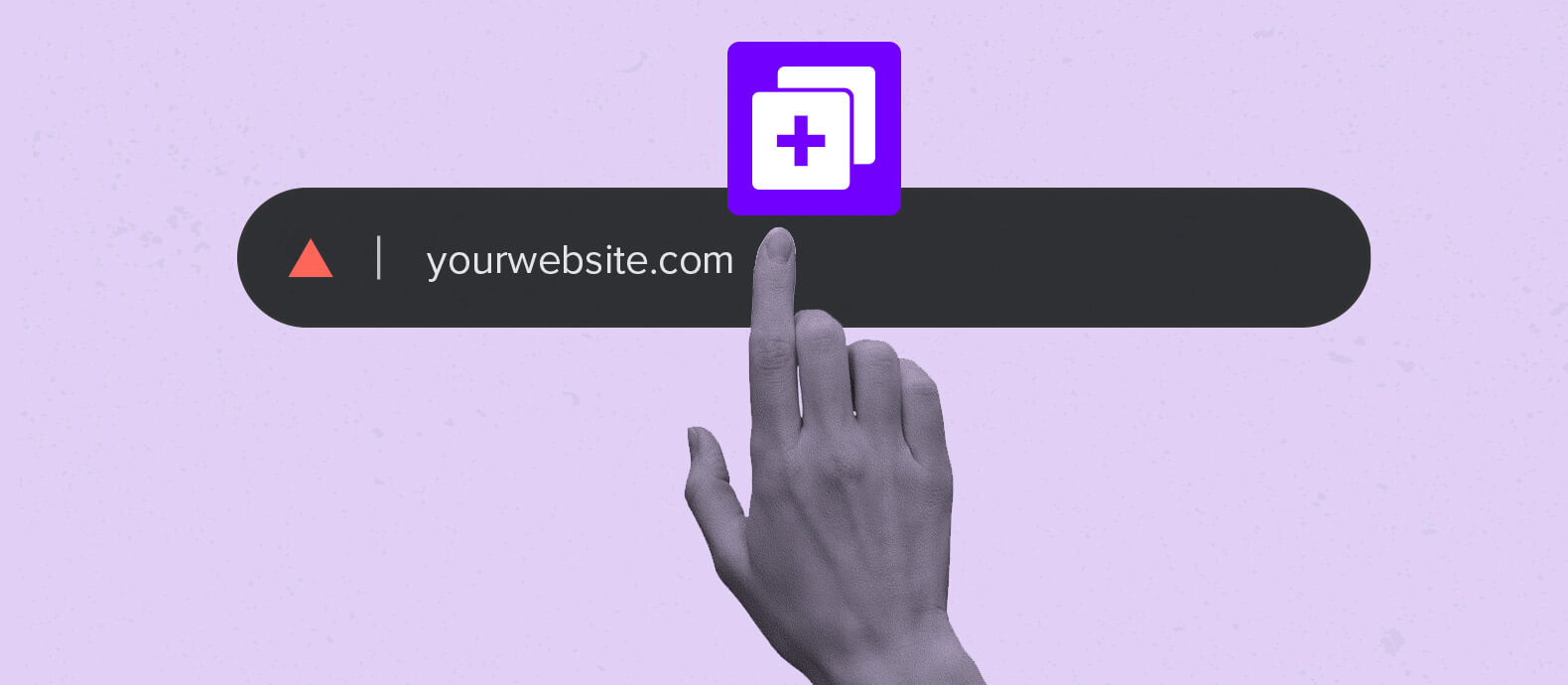One of the most common struggles website owners and/or content creators face is their website content being copied. Website content theft, or the unauthorized use of website content by another person or entity for their own benefit, is often resorted to because creating original and high-quality content takes a significant investment in time, money, and effort. As a result of this, there are many bad actors that hope to skip the work and simply copy someone else’s effort and publish it as their own.
Not only is this a bad business practice that typically is not effective long term, but it is actually illegal if the content is properly copyrighted or includes any registered trademarks. If you are a website owner or content creator, then you would understand why these cases of plagiarism or infringement are so bad for your brand and business and thus should be dealt with seriously.
With this in mind, in today’s article, we will focus on the following:
- Why it is important to protect your website content from being copied;
- How to detect if your website content has been copied;
- What to do if you detect your website content has been copied; and
- What else can be done to stop website content theft?

Why is it important to protect your website content from being copied?
- To assert your ownership.
It is important to protect your work from being copied for the simple reason that as an intellectual property owner, you have the exclusive right to your creation. However, despite this, the burden remains on the creator to proactive monitor and safeguard its intellectual property.
- To safeguard your brand reputation and value.
In terms of economic and commercial effects, protecting your website content has a direct impact too. For one, if someone else uses your website content for their own benefit, the value of your work can diminish. Your brand or business loses its advantage over the web content, which, supposedly, is for its own exclusive use and benefit. In addition to this, when your audience or market discovers the infringement, it would definitely not do good to your brand identity and reputation, even if technically, you are also just a victim yourself.
What do the laws say about website content theft?
DMCA is short for Digital Millennium Copyright Act is the governing law on online copyright infringement. It was enacted in 1998 and now forms part of the United States copyright laws.
Some of the notable points of the DMCA are:
- Establishment of a notice-and-takedown system and other safeguarding measures, which allow copyright owners to inform the concerned online service provider/s about the infringing content so that it can be taken down.
- The illegalization of activities that tend to circumvent a technological measure to access an otherwise copyrighted work, including usage of devices whose purpose is to circumvent the technological measure in order to access or infringe copyrighted content.
- The illegalization of providing false copyright management information in published online work.
- Safe harbor provisions for online service providers, such as the enumeration of specific requirements for when they can evade liability and be entitled to a notice-takedown-putback recourse.
How can you detect if your website content has been copied?
Use plug-ins that track your visual content on the web.
For small businesses that may be dealing with small-scale instances of copyright infringement or impersonation, there are search engine plug-ins or extensions that can help to identify if the content has been stolen and posted on other websites. Many of these tools, such as Alibaba Search by Image, are free to use and can make finding infringements easier and more manageable. These plug-in tools give you the ability to track down bad actors that are impersonating your brand and may even lead you to fake domains that have cloned your business’s site, created specifically to scam users at the expense of your brand’s reputation.
Additionally, you can use Google’s image search feature on your own site to track copyrighted content, such as your product images, once you do this search google will provide you with a ranking list of pages that feature those particular images. If your brand’s registered intellectual property appears on any unauthorized website then you can actually file a DMCA takedown to have it taken down.
Automate the detection process of copied content with Red Points
While having your website copied might even sound flattering, it can actually be extremely destructive for a business if preemptive measures aren’t taken to protect your business’s intellectual property online. In fact, there have been many cases in which businesses have had their websites completely cloned by bad actors using fake websites with the sole purpose of scamming users out of personal info, such as logins and passwords, or financial data like banking information. The bad actors may even use tricks such as typosquatting or cybersquatting in order to make the fake website look legitimate at first glance when it really is a scam.
With Red Points’ Domain Takedown Services, you can not only automate the detection of fake websites that are impersonating your business’s domain, but you can also automate the process of them being taken down! The process works in three simple steps:
- First, by leveraging our bot-powered technology, we monitor and detect a high volume of sites to find any potential cases of infringement.
- Then, when Red Points’ bot-powered search actually finds a potential case of impersonation, specifically cases that involve the unauthorized use of registered intellectual property, such as trademarks or copyrights.
- This ultimately takes us to the final step in the process, which is enforcement. This allows the brand to authorize the takedown of the impersonator on the groups that they are infringing upon their intellectual property (IP). While the exact process of the takedown itself can vary depending on the type or scale of the infringement, Red Points will assist throughout the entire process to ensure your registered IP is properly enforced.
What can you do if your website content has been copied?
Directly contact the author and/or website owner.
Most business web pages include a tab or link that leads to the company’s contact details. If your web content has been duplicated in a website that does have the necessary contact information, you may choose to directly communicate through these channels to inform them about the infringement, and that you wish for them to immediately take down the plagiarized content.
Usually, this measure is resorted to before any other step is taken, such that the infringer is given time for correction before serious legal steps are employed.
File a DMCA Takedown notice.
A DMCA Takedown notice is a formal take-down request that reports and addresses online copyright infringement, this is the next step in terms of escalation if you are not able to contact the author or website owner that has published your intellectual property without authorization which you can file whether or not you were able to directly contact the perpetrator as above-mentioned. The term is short for Digital Millennium Copyright Act, which essentially is the governing law on online copyright infringement.
However, it is important to note that while a DMCA Takedown notice is an effective strategy to have specific pieces of content removed from a site that may be infringing on your rights as an intellectual property owner, it is not going to take down the website itself.
Send a cease and desist letter
If the extent to which your website has been copied extends to such an extent that you think the offending site needs to be taken down, then simply sending a DMCA Takedown may not necessarily be enough. While it is a great start, in addition to the Takedown notice, you should also consider sending a formal cease and desist letter to the domain registrant or the admin of the site.
Report the infringing site to Google
Fortunately, you can also leverage Google to ensure that you are not having your search traffic or SEO impacted by another site copying yours. In order to do this you can report the offending site to Google, who will then de-index the site so that they do not show up on the results page. This means that your site will no longer have to compete for clicks with a site that has simply impersonated yours.
How Red Points can protect your website from being copied
As a Revenue Recovery Platform, Red Points aims to help busy business owners by giving them the tools they need to take back what’s rightfully theirs. In a case such as this, where your website content has been copied, the impact on your revenue can be difficult to gauge without the proper tools and even harder still to recover if it’s already happening.
This is where Red Points’ Domain Takedown services can really have a beneficial impact, by automating the detection of fake websites that impersonate your domain. Our unique platform leverages smart technology and bot-powered searches to scan the web, social media, and even app stores in case of potential infringements on your intellectual property. The end result is that you no longer have to worry about any other sites copying yours, regardless of whether it be a case of plagiarism or a more sinister case of domain impersonation as part of a phishing scheme.
Here’s how Red Points’ system operates to ensure your domain is safe from impersonation 24/7:
Monitoring and Detecting
Just as was mentioned above, Red Points leverages the latest in brand protection technology to monitor the internet 24/7 in order to detect potential infringements. The process is started as soon as you first sign onto our platform and submit the specific intellectual property registrations (trademarks, copyrights, patents, etc.) you’d like to be monitored and with time our platform’s machine learning AI will only get more refined and accurate with what it flags as potential infringements.
This allows our platform to detect malicious sites that impersonate your domain quickly and get them taken down before they can do any harm to your business or its customers.
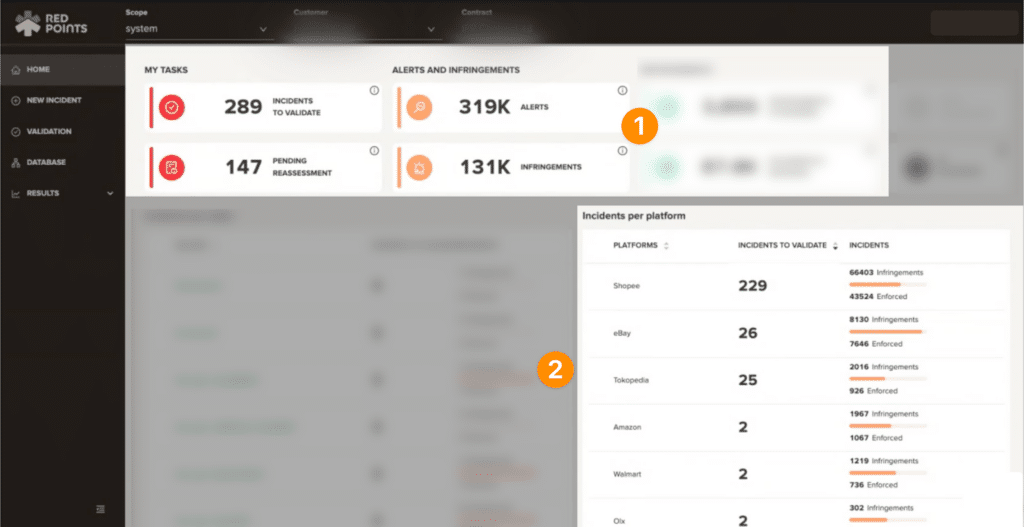
Validation & Prioritization
The next step in our process is where your role as a brand owner comes into play; once our platform detects cases of infringement, it is then your responsibility to validate what is and isn’t a genuine infringement. This ensures two things: first, that you can have the final say on behalf of your business before sending out any takedown requests or formal complaints for infringement, and second that it teaches our platform’s machine learning algorithm what to look for in an infringement to zone in specifically on genuine infringements.
Fortunately, even if our platform detects thousands of infringements, we can group similar incidents so that our platform does the heavy lifting and all you have to do is tell us what to enforce and what to ignore.
As far as prioritization, as you can see in the image below, our platform allows you to define what kinds of infringement are most important to you. This means that whatever you define as a high-risk infringement will always appear at the top of your list so that you can deal with it immediately.
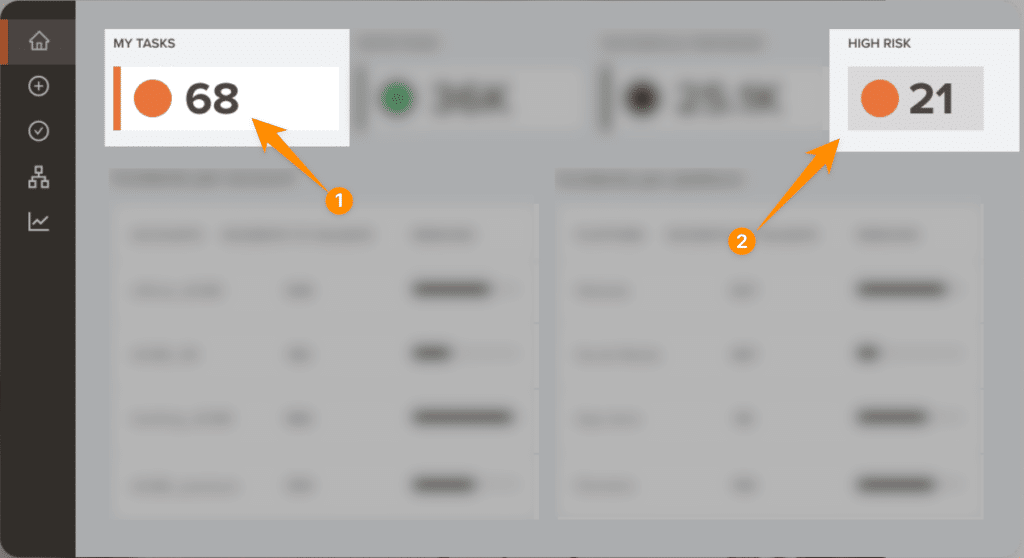
Enforcements and takedowns
Immediately after a potential infringement is validated by you on our platform by clicking the “enforce” button, we initiate the takedown process. Fortunately for you, Red Points handles this entire process, end-to-end, regardless of the platform or the type of infringement. This means that regardless of whether the takedown process is filling out forms, collecting evidence, or submitting a report, we take care of all of it. This ensures that you and your business can focus on the more important things, while we handle the dirty work.
Once the takedown is complete Red Points will share all the data it’s able to collect with you on its platform.
Customizable reports and dashboards
Once you start using our platform you’ll never have to question whether or not it’s working because of the variety of reports readily available for you to monitor. One of the most valued of these standard reports is our economic impact report (pictured below), which breaks down not only the total value of the infringements we’ve taken down on your behalf but also a more granular breakdown of how much each infringement has impacted your revenue.
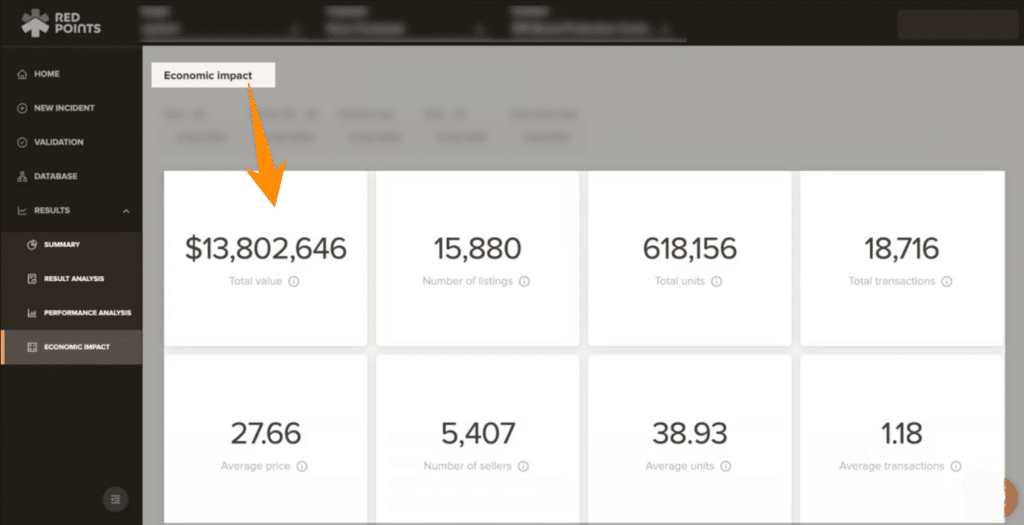
What’s next?
As you can probably tell by now, noticing websites that seem to copy your domain might only seem like a nuisance initially, but the reality is that they are dangerous and have a serious impact on your business. Fake websites can have a significant impact not only on your brand’s reputation with its customers but also on your revenue.
If you are interested in seeing how Red Points’ Domain Takedown Services can benefit your business, you can schedule a meeting with one of our Brand Protection experts completely for free!
